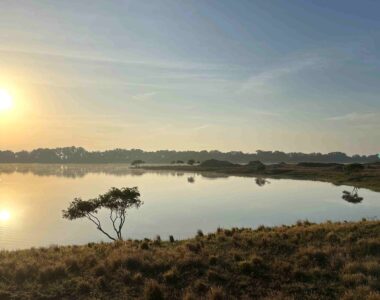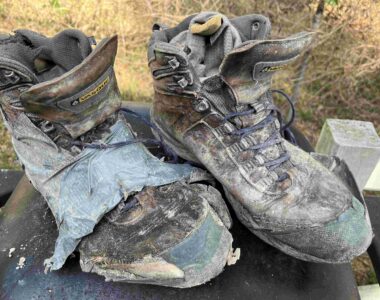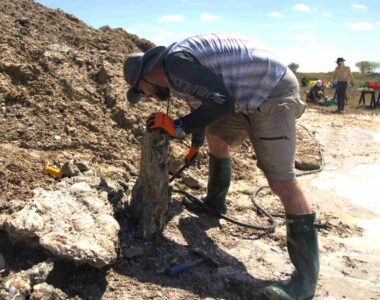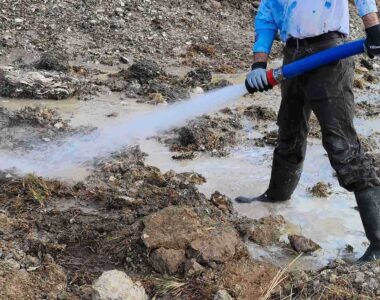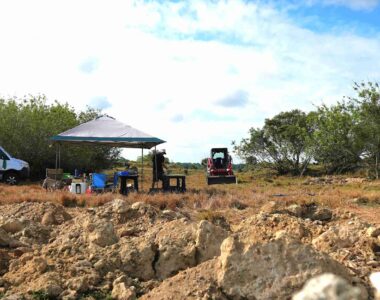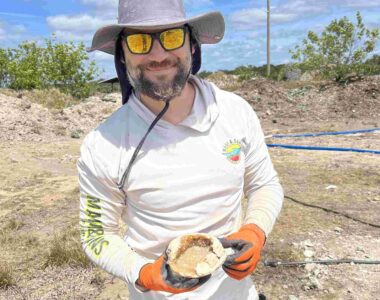Discover the Crystal Clam:
Unearthed by Pacific Geo Lab
The Story
“Incredible!” is the most commonly heard term when people first see this unusual combination of crystals and fossils. These crystal-replaced clams and conchs are known from only one site, an old aggregate quarry near Lake Okeechobee, Florida. They were discovered in the 1990s and became famous in both the mineral and fossil world. But by the time word of the site got around and we got a chance to visit the location, the quarry operation was already winding down. The mining played out in 2006 and the hole flooded in 2007. Unfortunately, the owner – who was into fossils and crystals and also very accommodating of strange paleontologists like us – got over-extended and went bankrupt soon after the quarry played out. The land was taken over by the bank and sold. Thirty years later, after meeting with the new owners, we arranged exclusive permission to research the site and perform limited excavations on the old quarry property. After several visits we discovered and mapped three sites where we dig and still find some of the classic crystalized clams that made this occurrence famous. But I assure you, it’s no picnic digging for these – it’s hard, dirty work. Even so, fossils like these, with gemmy crystals inside a stunning fossil, are exceptionally rare and make the effort well worth it. These specimens are a must for any serious collector.
How They Formed
The area around Lake Okeechobee was a shallow sea about 2 million years ago. As most bivalve communities are today, these clams lived in the sandy mud near the shoreline at the time. Sudden storm events – such as hurricanes and tropical storms – periodically buried the area under deep sediments, trapping the clams and other shellfish that lived there. As their bodies decayed, the process left behind cavities in the shells. With the heat and pressure that accompanied the pile-up of sediments, the original shell material (aragonite) became unstable and began to dissolve away. As it happened this provided the elements necessary to grow pure calcite crystals in the open spaces within some of the shells. Most of the clams and conchs in these old sediments do not have crystals. But even those that don’t are partially recrystallized and show very graphically the genesis of fossilization caught mid-way through the process. Even without the crystals, these fossil specimens are amazing. With crystals they are astounding!
Dive into the fascinating world of the Crystal Clam, a stunning geological find exclusively brought to you by Pacific Geo Lab. Unearthed from ancient seabeds, these unique crystal formations resemble the delicate beauty of real clamshells, with each piece telling a story millions of years in the making. Learn about their origins, formation process, and the incredible journey from the earth to your collection. Subscribe to explore more rare and captivating natural treasures!

